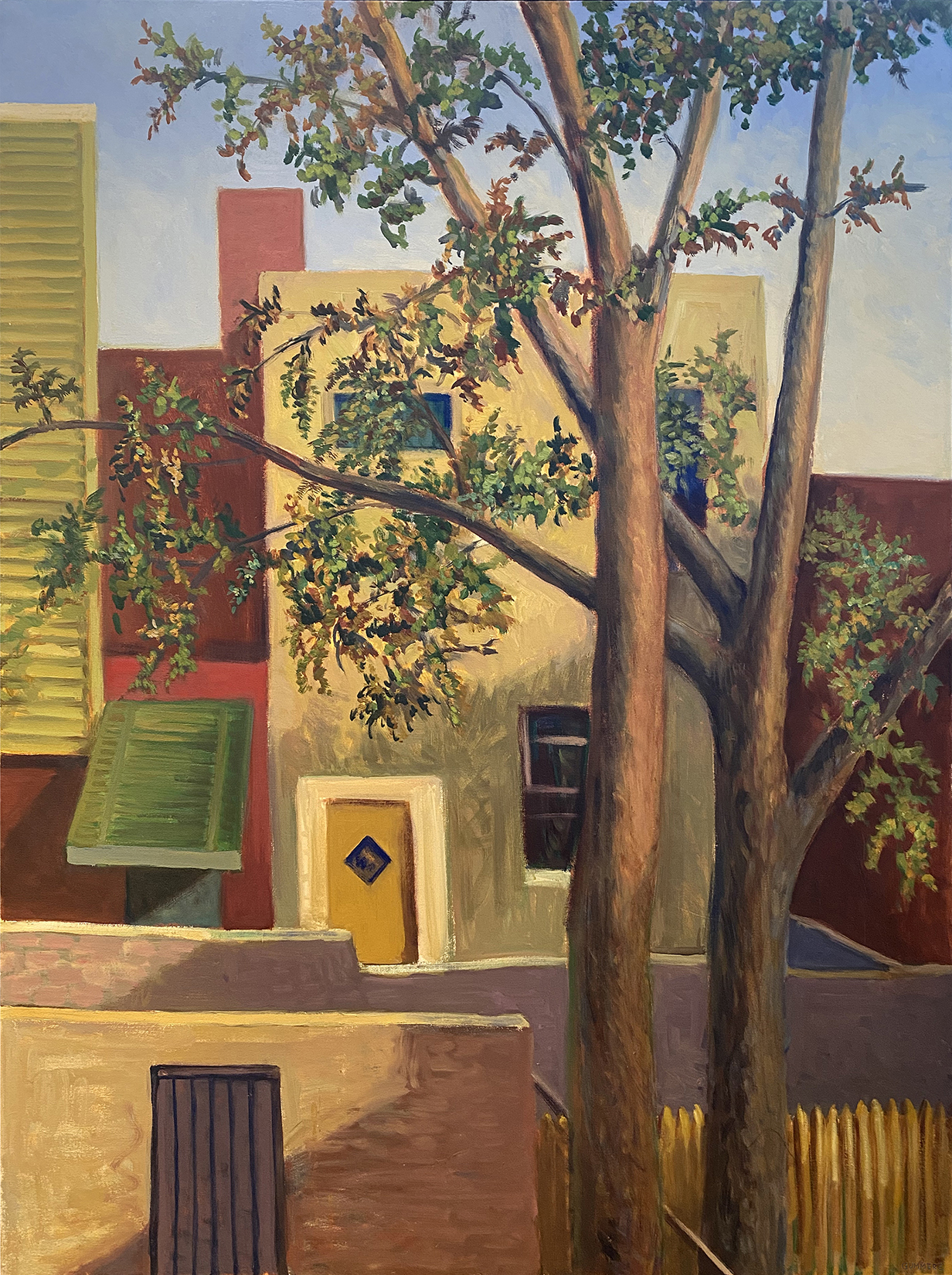TAWA at 45
The Exhibition

John Gummere
October, South Philadelphia
oil on canvas, 2010; 48″h x 36″w
John Gummere (www.be.net/JohnGummere) grew up in Trenton, NJ, where his mother, Peggy Peplow Gummere was well-known as a portrait painter. He graduated from Columbia University in 1977, with a BA in architecture and a special interest in painting, sculpture, and art history. He also studied art in part-time and summer courses with Mel Leipzig and others at Mercer County Community College, in the Trenton area. By the time he finished college, he knew that his first love was art rather than architecture. He continued to paint while working at various jobs in graphic design and teaching. In 1992 he returned to school full-time as a painting major at the Pennsylvania Academy of the Fine Arts in Philadelphia; he graduated from PAFA’s four-year Certificate Program in 1996. His paintings are in private collections in Los Angeles, Seattle, Philadelphia, Indianapolis, and elsewhere. He shows his work regularly at the Euphemia Gallery in Spring Lake, NJ; the sales gallery at the Trenton City Museum; and many juried shows in Pennsylvania and New Jersey.
“I paint in a representational manner, and use subjects as starting points to work with light, color, composition, and different ways of using paint. At the most basic level, I simply paint because I love to paint. I have always lived in and around cities and have often gravitated toward subjects involving the built environment, such as city scenes and interior compositions. When I approach architectural subjects in a painting, I rarely focus much on the architecture itself, I have always believed that very ordinary buildings can become great subjects for a painting. I don’t think of a painting as a rendering except insofar as I want the space to make sense. Mostly I think about taking the geometric shapes of buildings, streets, and other elements in a space, and treating them as a composition. I get a kick out of the happy accidents that I come across in developing a painting—when shapes seem to ‘rhyme’ or more interestingly, half-rhyme. In recent years I have also worked more with non-urban landscapes, as well as more personal paintings with human or animal subjects. With these, I’m often reflecting on the mood at a moment in time, and what stories the subjects in the painting might tell.”
